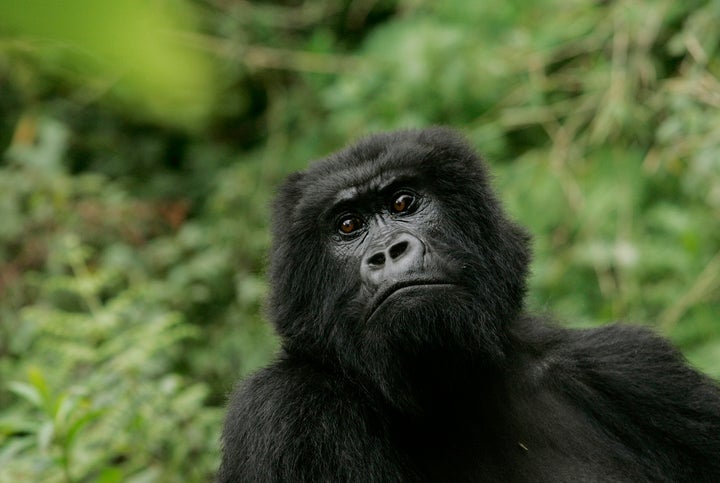The eastern gorilla is now just one step away from extinction after it was classified as critically endangered in the Red List of Threatened Species.
The announcement means that four of the six great apes, human’s closest cousins, are perilously close to being wiped out.
Found in East Africa, eastern gorillas, which are the world’s largest living primates, have seen their fortunes worsen as a result of illegal hunting.
Plains zebras have also declined by almost a quarter in the past 14 years as a result of illegal hunting and are now “near threatened” on the latest Red List of Threatened Species.
But there is better news elsewhere in the animal kingdom with one of the flagship species of conservation, giant pandas, seeing their status improve from “endangered” to “vulnerable”, a lower category of risk.
Populations of eastern gorillas, found in Rwanda, Uganda, and eastern Democratic Republic of Congo (DRC), have nosedived in the past 20 years by more than 70%.
One of the two subspecies, the Grauer’s gorilla which is only found in eastern DRC, has lost 77% of its population since 1994, with numbers falling from 16,900 to just 3,800 in 2015, the conservationists said.
The key threat to Grauer’s gorillas is hunting, even though killing or capture of great apes is illegal.
The second subspecies, the mountain gorilla, which is found in the volcanic mountains which border Rwanda, Uganda and DRC and in a nearby area southwestern Uganda, has fared better and its numbers have increased to around 880 individuals.

Inger Andersen, IUCN director general, said: “To see the eastern gorilla – one of our closest cousins – slide towards extinction is truly distressing.
“We live in a time of tremendous change and each IUCN Red List update makes us realise just how quickly the global extinction crisis is escalating.
“Conservation action does work and we have increasing evidence of it. It is our responsibility to enhance our efforts to turn the tide and protect the future of our planet.”
Among the great apes, the eastern gorilla, western gorilla, Bornean orangutan and Sumatran orangutan are now listed as critically endangered, while the chimpanzee and bonobo are both endangered.
Elsewhere on the Red List, 87% of the 415 plants only found in Hawaii which have been assessed for the Red List so far are endangered, while Vietnam’s psychedelic rock gecko has been listed as endangered.
Along with the giant panda, conservation successes include boosting populations of Tibetan antelopes, and the fortunes of the greater stick-nest rat and the bridled nailtail wallaby which are both found in Australia.
Conservation charity WWF, whose symbol is the giant panda, described the results for the animals as “hugely encouraging”.
Glyn Davies, executive director of global programmes at WWF-UK, said: “It is a significant conservation success following years of enormous efforts on the part of the Chinese Government, communities and NGOs.
“This is a cause for celebration and proves that a united approach can bring a substantial difference to threatened species, even at a time of great economic growth in China.”
But he warned the success needed to be placed in the wider context of a 52% average decline in populations of mammals, birds, reptiles, amphibians and fish around the globe between 1970 and 2010.
“We ignore the decline of species at our peril - as they are the barometer that reveals the impact we are having on the planet that sustains us.
“We need urgent action to ensure that global temperature rises caused by human activity are limited to well below 2 degrees C, that natural habitats are protected and that we consume only as many resources as the Earth can replenish,” he said.